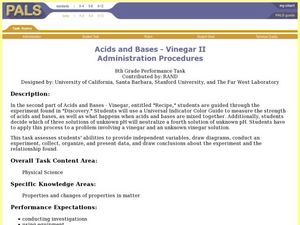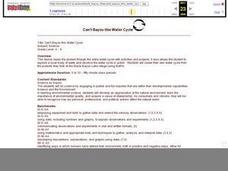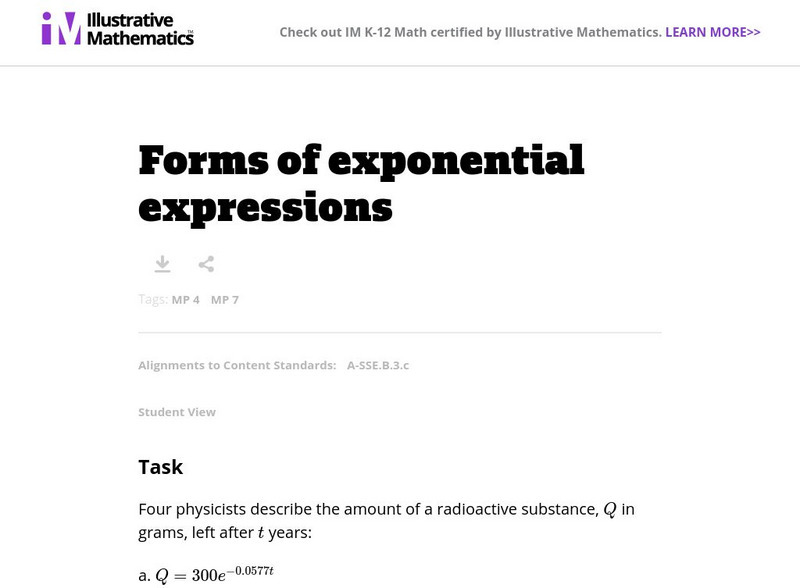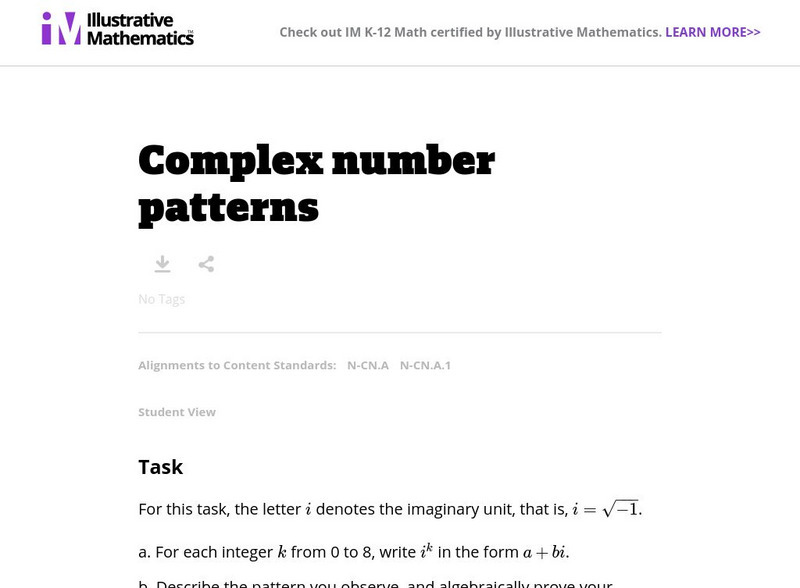Curated OER
Getting to the Bottom of the Pyramids
Middle schoolers work together to develop logical arguments about pyramids and chain letters. They share their ideas with other groups and create a diagram showing the breakdown. They discuss the results.
Curated OER
Children in War and Strife: Case Studies
Students examine the lives of students in war torn countries. After reading case studies, they work together to answer discussion questions. They review the roles of the Human Rights Watch and Amnesty International and develop a museum...
Curated OER
Lu-Lu
First graders practice their counting skills while playing a Hawaiian game called Lu-Lu. Lu-Lu is a Hawaiian counting game. It is played with four stones. Each stone is divided into four equal sections and dots are placed in the...
Curated OER
Musical Plates
Sixth graders engage in a study of the plates and how they are part of the formation of the ever changing landscape of planet earth. They access web sites that have applications for observation and conducting different activities. The...
Curated OER
Acid Precipitation
Students test the acidity of unknown solutions. They use this information to make inferences from data given from recorded rainfall records to identify areas that receive the most acid rain.
Curated OER
Cloudy With A Chance of Meatballs
Third graders use a variety of information resources to identify local environmental issues and examine the ways that people have tried to solve these problems. They read "Cloudy With A Chance of Meatballs" and create a list of three...
Curated OER
Acids and Bases - Vinegar II
Eighth graders experiment what happens when acids and bases are mixed together. In this acids and bases experimental instructional activity, 8th graders decide which of three solutions of unknown pH will neutralize a fourth solution of...
Curated OER
Company is Coming
Students find a recipe for pancakes on the web then figure out how to half the recipe then figure how to make 3/4 of the pancakes.
Curated OER
Central Tendencies and Normal Distribution Curve
Fourth graders are given data (class test scores) to determine central tendencies, and find information needed to construct a normal distribution curve. They become proficient in calculating mode, median and average.
Curated OER
Entering Numbers 1 to 10, 1 to 20, 1 to 100
Students enter numerals on spreadsheet and use template to record numerals.
Curated OER
Linear Progression
Students use graphing calculators to graph lines and create tables of values. They perform an experiment using M&M's and slinkys, then create their tables based on their results.
Curated OER
Can't Bayou this Water Cycle
Students identify the stages in the water cycle. They observe a local water source and view the cycle in action. They create their own water cycle using software.
Curated OER
Meteorology
Second graders identify and describe the three types of clouds. They discover the type of weather associated with each cloud type as well. They ask questions to complete the lesson.
Curated OER
Keeping Us in Stitches Activity: Hexagon Quilt Top Design
Students examine how the hexagon shape can be a building block for quilt patterns. They view images of quilts, discuss symmetry and design patterns, and create and name an original quilt design.
Curated OER
Making Rectangles
Students study rectangles. In this math instructional activity, students use numbers, measurements and geometry to draw rectangles of varying sizes.
Illustrative Mathematics
Illustrative Mathematics: S Id.4 Should We Send Out a Certificate?
Should Fred receive a certificate for scoring in the top 2.5% of a statewide standardized test? Given the test scores for a large population and the mean and standard deviation, students will decide if Fred's score is good enough....
Illustrative Mathematics
Illustrative Mathematics: G Gpe Explaining the Equation for a Circle
This problem examines equations defining different circles in the x-y plane. Students must use the Pythagorean Theorem to find equations whose solutions are points on the circle and explain why they work. Includes a GeoGebra worksheet...
Illustrative Mathematics
Illustrative Mathematics: A sse.b.3.c Forms of Exponential Expressions
This task can be used for assessment, practice or even to motivate young scholars via an in-class discussion of why it is useful to rewrite exponential expressions in equivalent forms. Aligns with A-SSE.B.3.c.
Illustrative Mathematics
Illustrative Mathematics: N cn.a and N cn.a.1: Complex Number Patterns
This task serves as a possible first student exploration after an initial introduction to the form and arithmetic of complex multiplication. Students need to understand that every complex number can be expressed in the form a+bi, and...
Illustrative Mathematics
Illustrative Mathematics: A sse.b.3: Profit of a Company
This task compares the usefulness of different forms of a quadratic expression. Students have to choose which form most easily provides information about the maximum value. Aligns with A-SSE.B.3.
Illustrative Mathematics
Illustrative Mathematics: a.apr Combined Fuel Efficiency
The purpose of this problem is to rewrite simple rational expressions in different forms to exhibit different aspects of the expression, in the context of a relevant real-world context, in this case, the fuel efficiency of a car. A-APR.D.6.
Illustrative Mathematics
Illustrative Mathematics: Measuring Cups
This task could form part of a classroom activity where learners are encouraged to find as many different ways as possible to make different fractions such as 1/12 and then share their methods. While measuring cups would be helpful to...
Illustrative Mathematics
Illustrative Mathematics: S Id.6 Used Subaru Foresters
Help Jane sell her Forrester! Using the data given, students will make an appropriate plot with well-labeled axes that would allow you to see if there is a relationship between price and age and between price and mileage. Students are...
Illustrative Mathematics
Illustrative Mathematics: G Gpe, G Co, G Srt Unit Squares and Triangles
In this task, students are shown three unit squares and two line segments connecting two pairs of vertices. They are asked to find the area of a triangle formed by intersecting lines. They can solve it using coordinate geometry or...




















